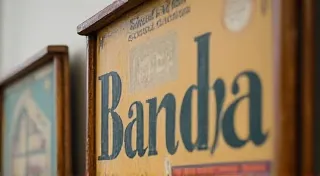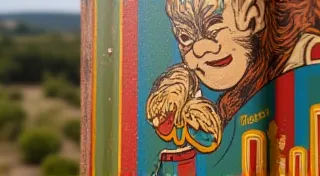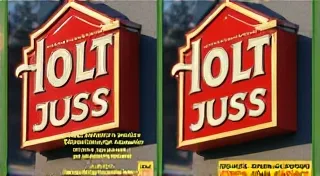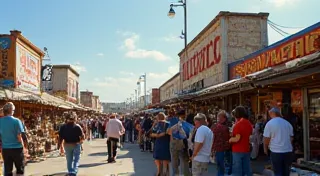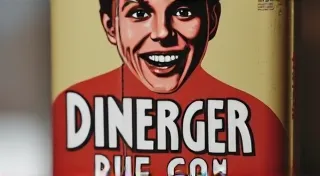Sign Collecting Etiquette: Buying, Selling, and Trading
The world of vintage advertising signs is a passionate one. Collectors, dealers, and enthusiasts are united by a shared appreciation for these fascinating relics of the past. However, as with any niche community, maintaining respectful and ethical interactions is crucial for its continued vibrancy and enjoyment. This article explores key etiquette guidelines for buying, selling, and trading advertising signs, ensuring a positive experience for everyone involved.
Respect for the Signs Themselves
Before delving into interactions with other collectors, it's important to acknowledge the objects themselves. These signs represent a piece of history, a snapshot of a bygone era in marketing and design. They’re not just commodities; they are tangible connections to the past. Understanding the artistic merit and historical context behind these signs can be fascinating - sometimes the story behind the sign is just as captivating as the sign itself. For a deeper dive into the artistic evolution and historical significance of these captivating pieces, you might find “Beyond the Brand: The Art and History Behind Vintage Advertising Sign Design” particularly enlightening.
- Handle with Care: Vintage signs are often fragile and deteriorating. Handle them with extreme care to avoid further damage.
- Authenticity is Paramount: Respect the authenticity of a sign. Don't attempt to alter or "improve" a sign to increase its value – this is considered unethical within the collecting community. Restoration is a complex topic (discussed further below) and should always be disclosed.
- Documentation: Research and understand the history of the sign you own. Knowing its origins and original purpose adds to its value and appreciation.
Buying Etiquette: Due Diligence and Fair Dealing
The buying process should be a transparent and respectful exchange. Here are guidelines for buyers:
- Ask Questions: Don’t be afraid to ask sellers detailed questions about a sign’s condition, history, and any known repairs. A reputable seller should be willing and able to provide answers.
- Examine Carefully: If possible, examine the sign in person. Look for signs of repair, damage, or alteration. Use a blacklight to check for touch-ups.
- Condition Reporting: Understand and accept the condition of the sign. "As-is" means as is – don’t expect a seller to magically improve a sign after you've committed to purchase.
- Pricing: Research comparable sales. While the market fluctuates, a fair price reflects the sign's rarity, condition, and desirability. Don’t attempt to lowball sellers drastically. Knowing where to find these gems is half the battle - check out "Finding Hidden Gems: Where to Buy Vintage Advertising Signs" for expert tips.
- Respect Seller's Expertise: Sellers often possess valuable knowledge. Be open to learning and acknowledging their expertise.
Selling vintage signs requires honesty and a commitment to fair dealing. Here's how to conduct yourself ethically:
- Accurate Description: Provide a complete and accurate description of the sign's condition, including any damage, repairs, or alterations. Be upfront about flaws – don’t try to hide them.
- Detailed Photos: Include multiple high-quality photos from various angles, highlighting both the good and the bad.
- Disclose Repairs/Restoration: Clearly state whether the sign has been repaired or restored. Describe the type of restoration and what was done. This is crucial for transparency.
- Reserve Price: If using an auction platform, consider setting a reasonable reserve price to protect your investment.
- Shipping: Pack the sign securely to prevent damage during shipping. Factor shipping costs into your pricing.
Trading Etiquette: Fair Exchange and Mutual Respect
Trading signs can be a rewarding way to expand your collection. However, it requires careful consideration and mutual respect:
- Evaluate Fairly: Both parties should thoroughly evaluate the value of the signs being traded. Consider rarity, condition, and desirability.
- Transparency: Be completely transparent about the condition of your sign. Don’t try to downplay flaws.
- Negotiation: Be willing to negotiate. A successful trade is one that benefits both parties.
- Written Agreement: For valuable trades, consider a written agreement outlining the terms of the exchange.
Restoration is a complex and often controversial topic in the vintage advertising sign community. Some collectors prize signs that retain their original, weathered patina, while others appreciate the skill and artistry involved in restoring them. While the decision of whether or not to restore a sign is a personal one, transparency is paramount. The type of materials used and the techniques employed can significantly impact the sign's value and collectibility. While some find beauty in the aged appearance of a sign, others are fascinated by the artistry of neon. If you're intrigued by the history of illuminated advertising, explore "The Rise of Neon: Advertising Signs That Glowed" for a captivating look at a different era of sign collecting.
- Disclosure is Key: Always disclose whether a sign has been restored.
- Reputable Restorers: If you choose to restore a sign, use a reputable restorer who understands the nuances of vintage sign restoration.
- Respect Opinions: Respect the opinions of others regarding restoration. It’s a personal preference.
Beyond the visual appeal, understanding the manufacturing processes and materials used in vintage signs provides a deeper appreciation for their historical significance. From the vibrant hues of porcelain enamel to the intricate details of hand-painted signs, each piece tells a story of a bygone era. The materials and techniques used also offer clues about the sign's age and origin, allowing collectors to piece together its journey through time. The collectibility of vintage signs is significantly influenced by a multitude of factors beyond mere aesthetics. Rarity, condition, historical significance, and artistic merit all contribute to a sign's value and desirability. A sign's rarity is a key driver of its collectibility, with fewer examples typically commanding higher prices. Condition is another critical factor, as signs in excellent condition tend to be more valuable than those with significant damage or restoration. Historical significance can also boost a sign's appeal, particularly if it represents a well-known brand or event. Ultimately, the world of vintage advertising signs is a fascinating intersection of art, history, and commerce.
By adhering to these guidelines, we can cultivate a respectful and enjoyable community for all who share a passion for vintage advertising signs. Remember that building trust and maintaining ethical conduct are essential for the long-term health and vibrancy of this fascinating hobby. The enduring appeal of these relics lies not only in their visual charm but also in the stories they tell – stories of a time when advertising was an art form and signs were more than just advertisements; they were landmarks, symbols of a culture, and tangible pieces of history.
